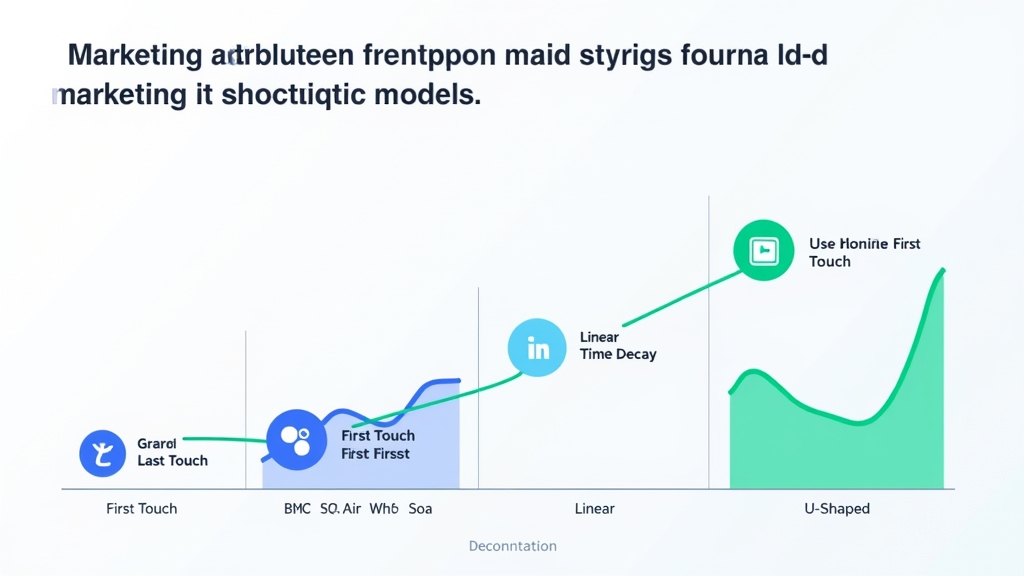Understanding Marketing Attribution Models: A Comprehensive Guide
Introduction
What is Marketing Attribution?
Marketing attribution is a method used to identify which marketing efforts contribute to sales or conversions. It helps businesses understand how different channels and touchpoints influence customer decisions. By assigning value to each interaction, companies can see what works best in their marketing strategies.
Importance of Marketing Attribution in Today’s Landscape
In today’s fast-paced digital world, understanding where your customers come from is crucial. With multiple channels available—like social media, email, and search engines—knowing which ones drive results can significantly enhance your marketing effectiveness. Effective attribution allows you to allocate resources wisely and optimize campaigns for better performance.
Types of Marketing Attribution Models
Single-Touch Attribution Models
Single-touch attribution models give credit for conversions to one specific touchpoint in the customer journey.
First-Touch Attribution
First-touch attribution assigns all credit to the first interaction a customer has with your brand. This model is useful for understanding how customers discover your business but may overlook later interactions that also play a role in conversion.
Last-Touch Attribution
Last-touch attribution gives full credit to the last touchpoint before conversion. This model highlights the final push that leads customers to make a purchase but ignores earlier influences that might have guided them along the way.
Multi-Touch Attribution Models
Multi-touch attribution models distribute credit across multiple touchpoints throughout the customer journey.
Linear Attribution
Linear attribution evenly distributes credit among all interactions leading up to a conversion. This approach provides a balanced view of how various channels contribute but may not reflect the true impact of each touchpoint accurately.
Time Decay Attribution
Time decay attribution gives more weight to interactions that happen closer in time to the conversion. This model recognizes that recent engagements are often more influential than older ones, making it ideal for short sales cycles.
U-Shaped (Position-Based) Attribution
U-shaped attribution assigns 40% of credit to both the first and last interactions while distributing the remaining 20% among middle interactions. This model emphasizes both discovery and closing stages, providing insights into critical points in the customer journey.
How to Choose the Right Attribution Model for Your Business
Considerations for Selecting an Attribution Model
When choosing an attribution model, consider factors like your business type, sales cycle length, and available data quality. For example, if you have a long sales cycle with many touchpoints, multi-touch models may be more effective than single-touch models.
Aligning Your Model with Business Goals
Your chosen model should align with your overall business goals. If increasing brand awareness is key, first-touch or linear models could be beneficial. Conversely, if you’re focused on driving immediate sales conversions, last-touch or time decay might serve you better.
Benefits of Implementing Marketing Attribution Models
Improved ROI Measurement and Analysis
Implementing marketing attribution allows you to measure return on investment (ROI) more accurately by identifying which channels yield positive results. This insight enables smarter budget allocation and campaign adjustments based on performance data.
Enhanced Customer Journey Insights
Attribution models provide valuable insights into customer behavior throughout their journey—from awareness through consideration to decision-making. Understanding these patterns helps refine targeting strategies and improve overall marketing effectiveness.
Challenges in Marketing Attribution
Data Integration and Quality Issues
One major challenge in marketing attribution is integrating data from various sources effectively. Inconsistent data quality can lead to inaccurate conclusions about channel performance or misalignment between reported metrics and actual outcomes.
Dealing with Cross-Channel Dynamics
With consumers interacting across multiple platforms before converting, tracking these cross-channel dynamics can be complex. Ensuring accurate tracking across all channels requires robust systems capable of capturing comprehensive user journeys without losing context along the way.
Best Practices for Effective Marketing Attribution
Establishing Clear KPIs
To ensure successful implementation of any attribution model, establish clear Key Performance Indicators (KPIs). These metrics will help guide your analysis efforts by focusing on what matters most—whether it’s conversions per channel or cost per acquisition rates—and allow you track progress over time effectively!
Utilizing Technology and Tools
Leverage technology tools designed specifically for marketing analytics! Many platforms offer advanced features such as automated reporting dashboards or real-time tracking capabilities that simplify monitoring performance metrics while providing deeper insights into consumer behaviors across different channels!
Future Trends in Marketing Attribution
The Role of AI and Machine Learning
Artificial Intelligence (AI) & Machine Learning are poised to revolutionize marketing analytics! These technologies enable businesses to analyze vast amounts of data quickly & efficiently uncover hidden patterns within consumer behaviors—allowing marketers to make informed decisions based on predictive insights rather than relying solely on historical trends!
Evolving Consumer Behavior Impacting Attribution
As consumer behavior continues evolving due to technological advancements & changing preferences; marketers must adapt their approaches accordingly! Staying ahead means embracing new methodologies like omnichannel strategies ensuring seamless experiences regardless of where consumers interact with brands online/offline alike!
Conclusion
Recap of Key Points
Understanding marketing attribution models is essential for optimizing your campaigns effectively! From single-touch methods like first- & last-click attributions through multi-touch options such as linear/time-decay/U-shaped approaches; selecting the right fit depends largely upon aligning chosen strategy goals while considering challenges faced during the implementation process itself!
Final Thoughts on the Importance of Effective Marketing Attribution
Effective marketing attribution empowers businesses by providing clarity around which efforts drive success ultimately leading to improved ROI measurement and enhanced insights into customer journeys—all vital components thriving in today’s competitive landscape!
📢 Explore More: Continue Your Journey!
If this article helped you understand marketing attribution better, check out “The Ultimate Guide To Digital Marketing Strategies”! It covers powerful tactics helping you boost engagement across various platforms.














![NEEWER 55W 18"/45cm Ring Light Kit [New Version], 5600K Dimmable ...](https://m.media-amazon.com/images/I/414QLqvZWLL.jpg)








